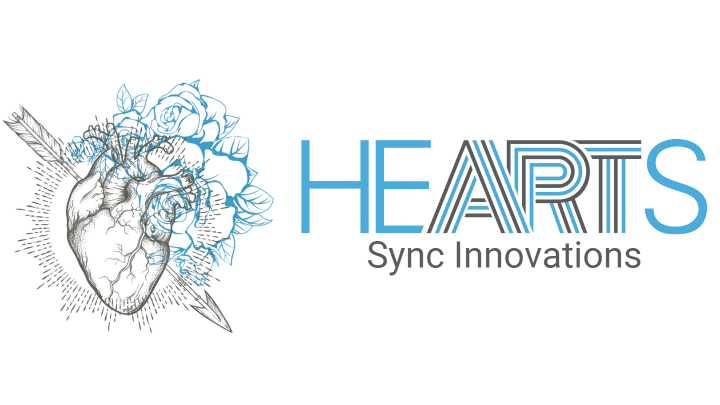Imagine a future where cognitive fitness is trained as naturally as muscle – Brain Gyms in every city, wearables that regulate neuronal recovery, and teams scheduling focus phases like athletes plan their competitions. This vision is not far off: the next generation will consciously design their mental performance – with habits that promote plasticity, increase stress resilience, and utilize sleep as a performance booster. Those who start today lay the neuronal infrastructure for lifelong clarity, creativity, and speed. Mental gymnastics is not a trend, but the new standard for high performers.
Mental gymnastics refers to systematic training of cognitive systems – attention, working memory, executive functions, creativity – analogous to physical workouts. The core principle is neural plasticitythe ability of the brain to change its structure and connectivity through experience. Plasticity is activated through challenging learning, movement, sleep, and stress regulation. The quality of the stimulus is crucial: novelty, difficulty, feedback, and regular repetition. Equally important is cerebral blood flowblood flow that delivers oxygen and nutrients as a driver for energy and repair processes, as well as brain-heart coherencesynchronized patterns between brain and heart activity, which stabilizes focus and emotional regulation. Social stimulation acts like fertilizer: interaction challenges language, empathy, and decision-making – all metabolic work for the brain.
Targeted learning, such as music or language, can strengthen executive functions and creativity – evidence shows that such training can positively affect cognitive abilities beyond the immediate learning area [1]. Aerobic training increases resting perfusion in frontal and hippocampal regions; this correlates with improved memory performance – a direct link from fitness to thinking speed [2]. Mindfulness meditation reduces perceived stress and enhances cognitive flexibility; at the same time, it aligns brain and heart rhythms into a more coherent interplay – a powerful lever for stable attention [3][4]. Sleep acts daily like a firmware update: even shorter sleep duration or poorer quality compared to personal averages reduces processing speed the following day – regardless of age [5]. The flip side: social isolation accelerates cognitive decline and exacerbates a vicious cycle of poorer emotional regulation, higher stress reactivity, and diminishing executive control [6][7].
Multiple lines of research converge into a clear picture. First: experience-based learning. Reviews of musical training show consistent, albeit partly domain-specific, cognitive gains from executive control to creativity. The authors emphasize that longitudinal data and individual differences are important, but the direction is promising: musical engagement as a feasible cognitive training with transfer potential [1]. Second: movement as a neurovascular turbo. In a randomized study with older, previously inactive adults, just a 12-week aerobic program led to higher resting blood flow in the anterior cingulate cortex and improved both immediate and delayed memory performance, which correlated with increased hippocampal perfusion. Even short interventions can initiate neuroplastic processes [2]. Third: mind and heart in sync. A four-week mindfulness intervention reduced stress and improved cognitive flexibility compared to active control, while an eight-week MBSR training study showed a tighter coupling between EEG alpha patterns and heart activity – suggesting that brain-heart coherence could be a sensitive measure of the effects of meditative practice. The practice is perceived as accessible and feasible, although long-term adherence remains a challenge [3][4]. Finally, a large-scale analysis across 24 countries shows that social isolation measurably diminishes cognitive abilities; mechanisms range from neuroinflammation to dysregulation of the HPA axis, and preliminary re-socialization data suggest partial reversibility – the brain remains malleable, even in old age [6][7][8].
- Learning sprints with transfer: Choose a skill that combines novelty and complexity – such as piano chords plus rhythm exercises or a language with weekly conversation classes. Plan: 3–5 sessions of 25–40 minutes per week, with increasing difficulty and immediate feedback. The goal is not perfection, but neuroplastic stimulation with cognitive transfer potential [1].
- Aerobic baseline performance: 3 sessions per week, each 45–60 minutes at a moderate intensity (you can talk, but not sing). Add a progression every 2–3 weeks. Proven effects: more cerebral blood flow in fronto-hippocampal networks and better memory performance – noticeable after just 12 weeks [2].
- Mindfulness as daily reset: 10 minutes of mindful breathing in the morning or between meetings; increase to 15–20 minutes after 1–2 weeks. Use timers and short guidance. Expected gains: less perceived stress, better cognitive flexibility; medium-term, a more coherent coupling of brain and heart rhythms as markers of stable attention [3][4].
- Sleep as a performance variable: Aim for 7–9 hours, maintain regular times, reduce light and work 90 minutes before sleeping. Monitor daily performance versus the previous night's sleep: even small deviations downwards worsen processing speed the next day – keep your personal target duration consistent [5].
- Social intensive contacts: Plan 2–3 high-quality interactions per week (learning partners, mentoring, joint training). Quality outweighs quantity – cognitively challenging dialogues and joint problem-solving break the isolation effect and nourish executive networks [6][7].
The next major leaps in cognitive performance will emerge at the intersection of learning, aerobics, mindfulness, sleep, and social density. Future longitudinal and individualized N-of-1 studies will clarify which combinations and doses yield the greatest neuronal return – including biomarkers like brain-heart coherence as real-time feedback. Those who start now are already testing the protocols of tomorrow.
This health article was created with AI support and is intended to help people access current scientific health knowledge. It contributes to the democratization of science – however, it does not replace professional medical advice and may present individual details in a simplified or slightly inaccurate manner due to AI-generated content. HEARTPORT and its affiliates assume no liability for the accuracy, completeness, or applicability of the information provided.













